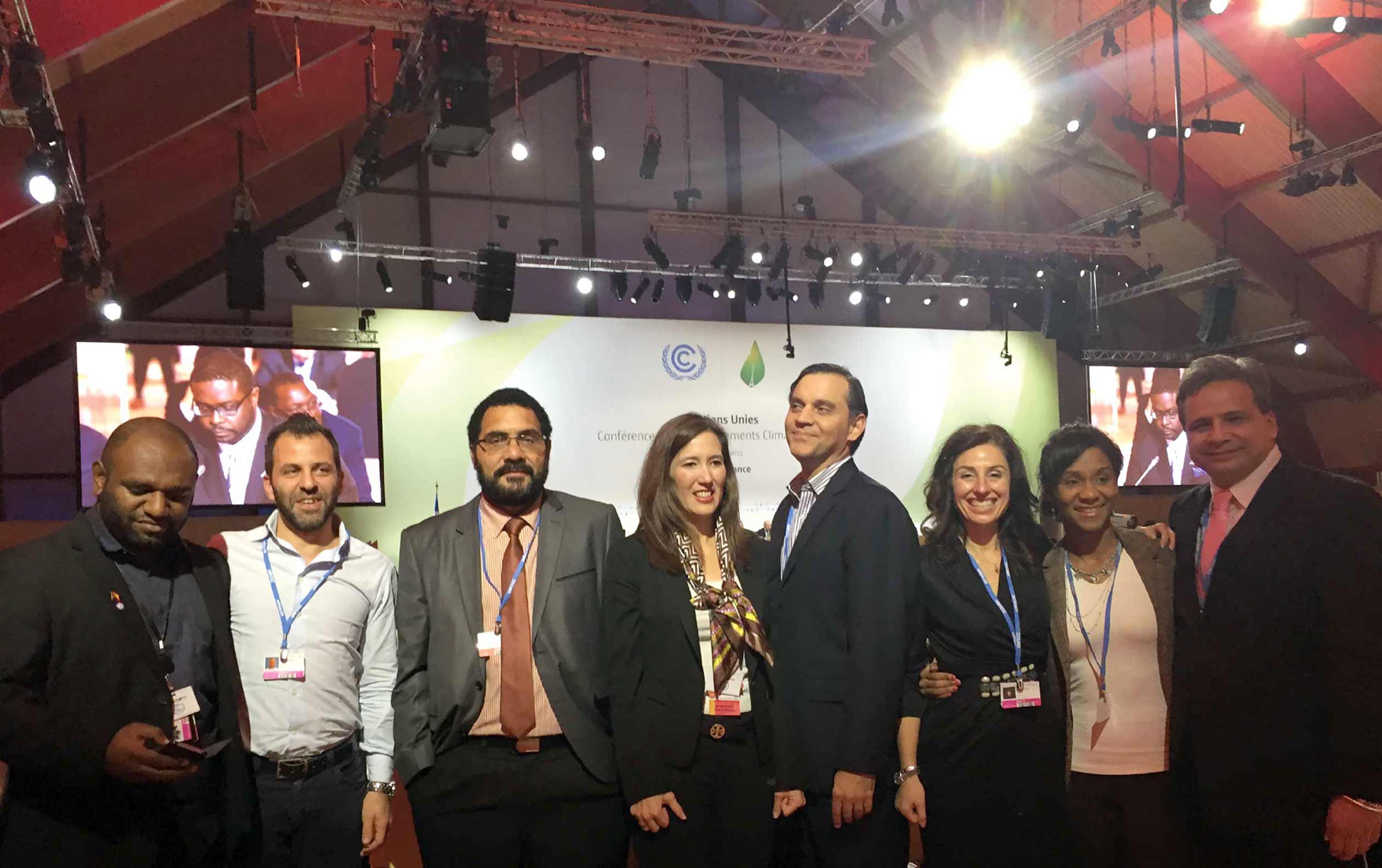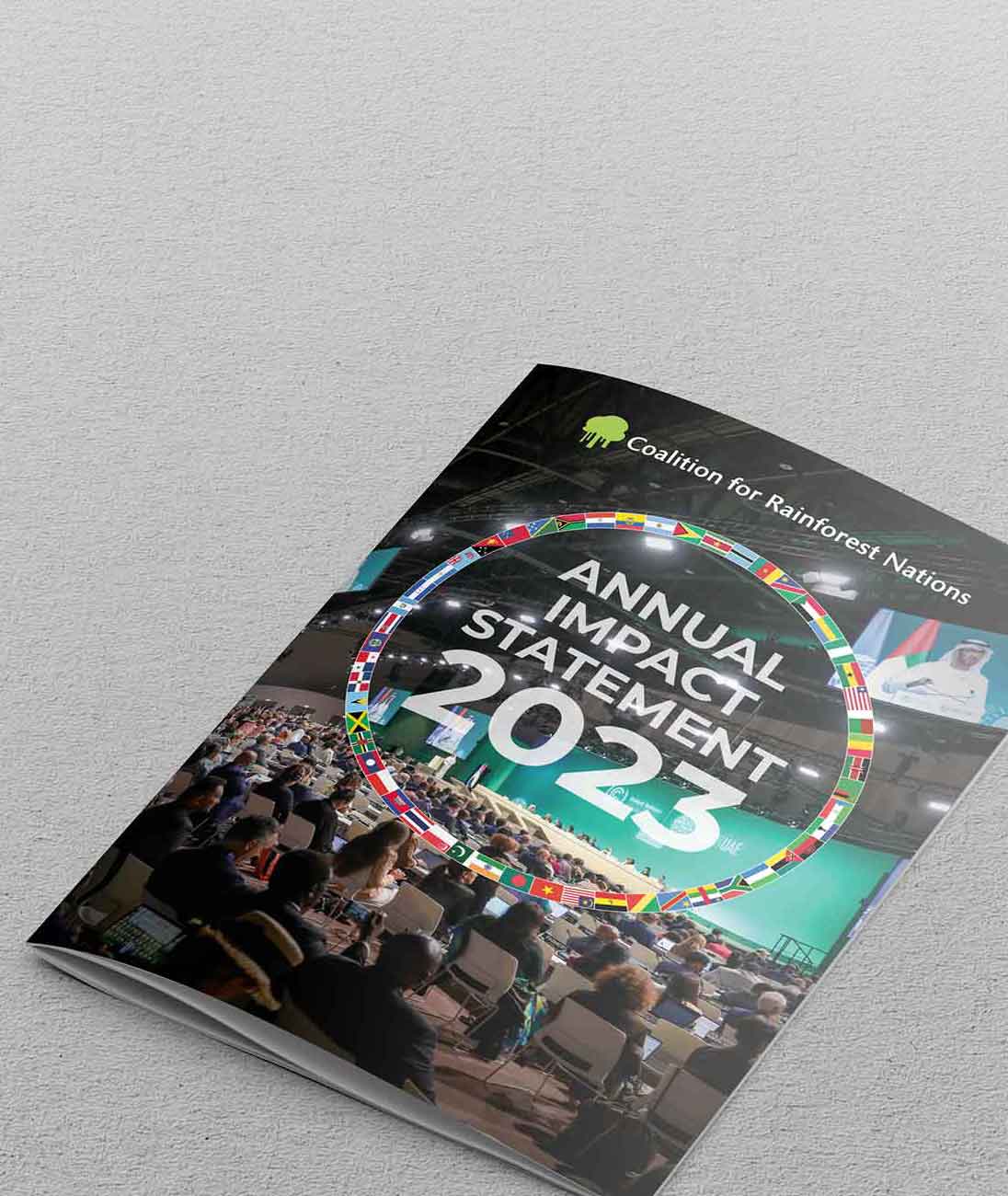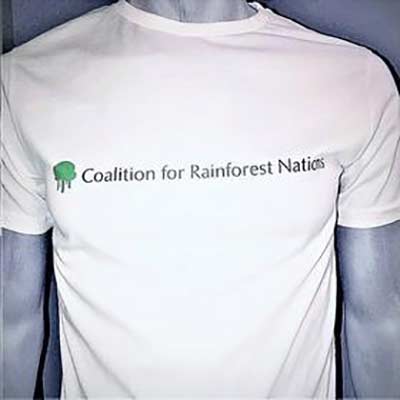About Us
Help Save Rainforests & Endangered Species
Our Story
About Us
Our Story
CfRN Timeline
2004 - Conservation Mechanism to Stop Deforestation – REDD+
Kevin Conrad of Papua New Guinea and Federica Bietta of Italy – two bold MBA graduate students at Columbia University– took on a challenge to change the world for the better. Inspired by a call to action by Grand Chief Sir Michael Somare, Prime Minister of Papua New Guinea, Kevin and Federica posed themselves the question of how to conserve the planet’s rainforests and bring equity to people around the world.
Their thesis: make trees worth more alive than dead. After all, rainforests provide a natural service for free; they absorb carbon dioxide, the greenhouse gas primarily responsible for climate change, and stop its release into the atmosphere. Dr. Geoffrey Heal, an economics professor at Columbia University, had written about nature and its role in the marketplace. What if the world attributed a financial value to that natural service? The largest contributors to greenhouse gas emissions could then pay for this service provided by the rainforests in countries hardest hit by the effects of climate change, slowing the acceleration of climate change and global inequity.
Kevin and Federica dubbed their effort Reducing Emissions from Deforestation (RED).As with many paradigm-shifting ideas, people were initially skeptical. But Nobel Prize-winning economist Joseph Stiglitz, an advisor, wasn’t! Neither was the government of Costa Rica, whose tropical forests represented 1% of the planet’s total. That December, after securing the formal support of Costa Rican government, the newfound Coalition travelled to the United Nations Climate Summit in Montreal, Canada, for the opportunity to be heard on a global stage.
2005 - Climate Summit, Montreal
2007 - Hero of the Environment
The effort to revalue rainforests came to a head in 2007 at the United Nations Climate Summit in Bali. There was a stalemate between developed and developing countries on agreeing to a global climate action plan–the predecessor of the Paris Agreement. In the final hours of the summit, the United States refused to agree to the plan. In a session with over 190 countries, CfRN’s Executive Director, Kevin Conrad, who was also acting as the Ambassador and Special Envoy on Climate Change for Papua New Guinea at the time and leading negotiations for rainforest nations, politely said:
“I would ask the United States, we ask for your leadership, we seek your leadership. But if for some reason you’re not willing to lead, leave it to the rest of us. Please get out of the way.”
Applause erupted around the room, and within the day, the lead American representative dropped the objection and said
“We will go forward and join consensus today.”
As a result, REDD+, which now included sustainable management of forests, conservation of forest carbon stocks, and enhancement of forest carbon stocks, was successfully formalized for the first time within the Bali Global Climate Action Plan. The first substantial decision on REDD+ was adopted, calling for demonstration activities to show how REDD+ would work in practice and be reported.

2009 - The World Expects
In Copenhagen in 2009, the world finally seemed on a course to achieve a global climate agreement. Many heads of state flew to Denmark on the last days of the Climate Summit, including President Obama of the United States and Premier Wen Jiabo of China. Yet again, the world couldn’t agree fully on what to do about the climate emergency.
REDD+ was the only success that year. Rainforest nations were now required to introduce national forest monitoring systems, with elements of measurement, reporting, and verification (MRV). Coalition nations began to prepare nationalREDD+ strategies, develop domestic capacity, establish forest and forest carbon reference levels, and create a participatory approach with “full and effective engagement of indigenous peoples and local communities in monitoring and reporting.”
In 2010, a deflated world gathered again to pick up climate talks at the United Nations Summit in Cancun, Mexico and put more pressure on rainforest nations to show accountability. A United Nations decision was made with a request that environmental and social safeguards be introduced for REDD+ and a reiteration of requirements for the national forest monitoring system. These country safeguards would ensure that implementation of REDD+ at the national level did not lead to detrimental effects on the environment or the local population. Rainforest nations were required to provide summaries of information on how these safeguards were implemented.

2013 - Breakthrough: The Warsaw Framework for REDD+
2015 - Success
After over a decade of persistence, and with over 50 rainforest countries in support, the Coalition of Rainforest Nations finally succeeded in establishing REDD+ within a global climate agreement between the members of the United Nations. The remaining outstanding decisions on REDD+ were also completed at the Summit. These included decisions on reporting on the safeguards, non-market approaches, and non-carbon benefits; the rulebook on REDD+ was completed.
All countries were encouraged to implement and support REDD+ in Article 5 of the Paris Agreement. This was part of a broader article that specified that all countries should take action to protect and enhance their greenhouse gas sinks and reservoirs, not only the rainforests.
The 21st session of the Conference of the Parties (COP 21) to the UN Framework Convention on Climate Change (UNFCCC), held in Paris in December 2015, successfully concluded 10 years of negotiations on the new global climate regime.
After many years of intense negotiations that started in Montreal at COP11 in 2004, all Parties adopted the Paris Agreement, which is now the foundation of the global fight against the climate emergency. For the Coalition and REDD+ the next advocacy challenge would be Article 6 of the Paris Agreement.

2020
Paris Agreement goes into effect
2022 - Fighting for Climate Finance
…Recalls that, in the context of the provision of adequate and predictable support to developing country Parties, Parties should collectively aim to slow, halt and reverse forest cover and carbon loss, in accordance with national circumstances, consistently with the ultimate objective of the Convention, as stated in its article 2; (footnote 30: Decisions 1/CP.16 and 9/CP.19.)..
Private sector finance has always been integral to the success of UNFCCC REDD+. There has never been a COP decision that ruled REDD+ out of the carbon markets. In Egypt, CfRN re-iterated this position with the inclusion of Footnote 30 which refers to previously recognized COP decisions, 1/CP.16, and 9/CP.19 that encourage private sector finance for developing countries in return for accomplished emissions reductions under the REDD+ framework.

Deputy Prime Minister, Ève Bazaiba of the Democratic Republic of Congo, Vice Minister of Environment, Malcolm Stufkens of Honduras, and CfRN’s Kevin Conrad and Emilio Sempris meet with Wael Aboulmagd, Special Representative of the COP 27 President.
2023 - It’s Official! Reverse Global Deforestation by 2030
At COP28 in Dubai, countries agreed to transition away from fossil fuels. The UAE Consensus Agreement also achieved a milestone in recognizing the need to reverse deforestation by 2030. Although previous pledges have been made to stop deforestation, such as 2020 Glasgow Leaders’ Declaration on Forests and Land Use, COP28’s commitment was a landmark as all 192 countries agreed this should be accomplished in accordance with the rules and methodologies under the UNFCCC and the Paris Agreement.
…the need for enhanced support and investment, including through financial resources, technology transfer and capacity-building, for efforts towards halting and reversing deforestation and forest degradation by 2030 in the context of sustainable development and poverty eradication, in accordance with Article 5 of the Paris Agreement…
The agreement now allows for the full implementation of UNFCCC REDD+ under Article 5 using Article 6 carbon markets as the tool to provide climate finance to sovereign nations for conserving rainforests at national level.

Climate negotiators from Suriname, Papua New Guinea, the Democratic Republic of Congo, Liberia, and Ghana at COP28, Dubai
2024 - Tripled Climate Finance and Finalized the UN Crediting Mechanism
- the environmental integrity of the Paris Agreement,
- a verification process which calls for country accountability,
- incentives for best practices and,
- finance for national efforts to reverse deforestation.
 Kevin Conrad, Executive Director for the Coalition for Rainforest Nations speaks to the media after a meeting at the COP29 summit. Photograph: Murad Sezer/Reuters
Kevin Conrad, Executive Director for the Coalition for Rainforest Nations speaks to the media after a meeting at the COP29 summit. Photograph: Murad Sezer/Reuters










